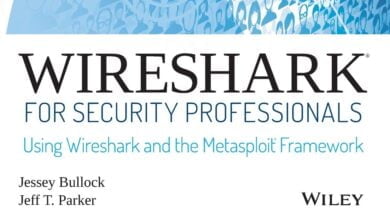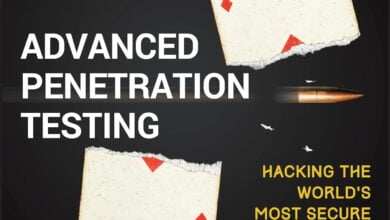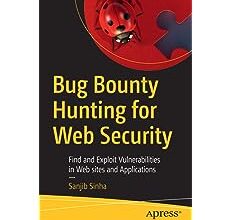Hands-On Network Forensics
Investigate network attacks and find evidence using common network forensic tools

Review: Bridging Theory and Practice in Network Forensics – A BugBustersUnited Perspective
Greetings, Digital Detectives!
Embark on an enlightening journey through the intricacies of network forensics with Nipun Jaswal’s pivotal work, Hands-On Network Forensics. This book, awarded a stellar 4.6/5 by our team at BugBustersUnited, stands as a beacon for those navigating the complex seas of network security. Let’s dive into what makes this book a must-read and where it could be even more impactful.
The Practical Edge:
Jaswal’s approach is refreshingly hands-on, veering away from dry, theoretical expositions to offer a mentorship-like experience. He advocates for an immersive approach, stating, “To master network forensics, one must delve into the depths of PCAP files.” This philosophy is brought to life through detailed walkthroughs of tools like Wireshark and Network Miner, illuminating the art of packet analysis – a critical skill in any cybersecurity professional’s toolkit.
In-Depth Network Attack Analysis: Enhanced Exploration
Jaswal’s journey through network attack mechanics is both enlightening and comprehensive. He starts with the fundamental principles of TCP/IP protocols, laying a solid foundation for understanding network communication. The book then escalates to advanced topics like intrusion detection systems (IDS), offering insights into their setup, configuration, and optimization.
Example: Jaswal meticulously explains the IDS configuration process, using real-world examples to demonstrate how to fine-tune these systems for maximum efficiency and accuracy. This includes practical scenarios, such as setting up Snort, an open-source IDS, to detect and alert on suspicious network traffic patterns.
DDoS Attack Strategies: Jaswal’s exploration of DDoS attacks stands out for its depth and applicability. He details various types of DDoS attacks and their signatures, equipping readers with the knowledge to identify and mitigate these threats effectively.
Example: The book includes a case study on a Layer 7 DDoS attack, where Jaswal demonstrates the use of rate limiting and filtering techniques to thwart such attacks, employing tools like iptables and fail2ban to enhance network resilience.
Evidence Handling Mastery: A Comprehensive Guide
Jaswal’s treatment of evidence handling in network breaches is both thorough and practical. He navigates the complexities of digital evidence collection, ensuring that readers grasp the critical aspects of evidence preservation and chain of custody.
Example: The book guides through setting up a secure evidence collection environment using tools like FTK Imager and Wireshark. Jaswal emphasizes creating forensic copies of digital evidence and maintaining detailed logs for legal admissibility.
Forensic Reporting: Jaswal’s emphasis on forensic reporting is a highlight of the book. He teaches readers how to compile findings into a coherent and persuasive narrative, vital for presenting evidence in legal and corporate environments.
Example: One chapter is dedicated to forensic report writing, where Jaswal provides templates and guidelines for creating effective reports. He uses a hypothetical data breach scenario to demonstrate how to articulate findings clearly and convincingly.
By expanding on these critical areas, Nipun Jaswal’s “Hands-On Network Forensics” stands as an invaluable resource for both aspiring and experienced cybersecurity professionals. Its blend of theoretical knowledge and practical application ensures a well-rounded understanding of network forensics, crucial for tackling the challenges of today’s digital landscape.
Areas for Improvement:
While the book excels in its practical approach, it leans more towards defensive strategies, leaving offensive cybersecurity tactics less explored. This focus may leave ethical hackers and bug bounty hunters seeking more information on offensive methodologies. Additionally, the book’s emphasis on practical application means that those looking for extensive theoretical exploration might find the content somewhat lacking in depth.
Ideal Readership:
Hands-On Network Forensics resonates most with intermediate learners. It acts as a bridge between foundational knowledge and advanced practical application, making it ideal for those looking to deepen their understanding through real-world scenarios.
Why the Rating?
BugBustersUnited awards this book a 4.6/5 for its exemplary practical approach, comprehensive coverage of network forensics, and invaluable insights into evidence handling. The points were deducted for its limited coverage of offensive tactics and theoretical aspects, which we believe could provide a more rounded understanding for our audience of aspiring bug hunters and cybersecurity experts.
In Conclusion:
Nipun Jaswal’s Hands-On Network Forensics is an essential resource for anyone in the field of cybersecurity. It strikes a fine balance between imparting practical knowledge and offering profound insights, albeit with room for more comprehensive coverage of certain aspects. Jaswal’s reminder that “Every bit in forensics tells a story” encapsulates the essence of this book – a narrative that enriches and empowers every cybersecurity enthusiast’s journey.




